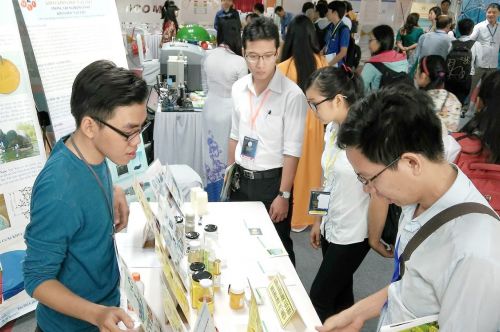Empowering Foreign Investors

Bright spots
The drop in foreign investment flows is a real trend and it needs due attention. However, Mr Do Nhat Hoang, Director of Foreign Investment Agency (FIA) under the Ministry of Planning and Investment, said: We still find bright spots when we delved into FDI data.
First of all, foreign investors disbursed US$850 million in July, bringing the total value to US$6.25 billion in the first seven months of 2012, almost equal the amount in the same period of last year. This was the actual capital flowing into the economy, creating social and economic changes, and generating incomes for the State Budget. "The stable amount of disbursed capital in the past few years is a positive signal for the economy, particularly in the face of global economic downturn,” said Hoang.
Another positive signal is existing FDI projects raised their capital by US$1.2 billion in July, nearly equal to a half of added investment capital in the first seven months (US$2.8 billion). This move proved they were operating well in the country. It is noted that increased capital usually equals a small value of fresh capital in the reporting period. In 2011, added FDI capital was US$3.13 billion, compared to US$11.56 billion of fresh registered capital. In 2010, existing projects supplemented only US$1.7 billion, compared with US$17.2 billion of fresh registered value.
Export and import value of FDI sector weighed on this remark. The sector earned US$39 billion from exports in the first seven months, including crude oil, up 36.6 percent year on year and equal 62 percent of the country’s total. Foreign-led companies spent US$32.9 billion on imports, 25.3 percent year on year. Trade surplus of this block was US$6.14 billion (including oil and gas).
Hoang also noted a more sustainable investment structure. In July, foreign investors added US$1.19 billion to manufacturing and processing sectors. In the first seven months, 160 processing and manufacturing projects increased investment capital by US$2.2 billion USD, well above 121 projects and US$814 million in the same period of 2011.
Consistency and transparency of incentives
Professor Nguyen Mai, Chairman of the Foreign-invested Enterprises Association, said: Although the economy is still facing difficulties, Vietnam has an important advantage. Vietnam started Free Trade Agreement (FTA) negotiations with the EU. If this agreement is reached, Vietnam will be able to attract see more FDI, especially from multinationals. Partnerships with the United States are getting better and better. This is an important driving force to attract FDI from leading economies in the world.
To attract more FDI for national development, according to Dr Le Dang Doanh, Vietnam must focus on three key factors: Institutional reform, human resource quality improvement, and infrastructure improvement. In the current context, we should give priority to institutional reform because we have limited resources for other tasks. Investors needed to be provided with incentives but policies on such incentives must be consistent, transparent and stable. This will help them build strategy and plans for long-term operations in Vietnam.
Clearly seeing this matter, Deputy Prime Minister Hoang Trung Hai asked the Ministry of Planning and Investment to issue a list of fields and localities which should receive preferential investment.
Accordingly, the Ministry of Planning and Investment will work with ministries, branches and localities to base on socioeconomic development strategies and tasks from central to local levels as well as international commitments to compile a governmental decree on investment preference. This document will detail fields, localities and scopes of preferences.
According to investors, when this document takes effect, regulatory inconsistency will be eradicated. Investors will not have to seek incentives for specific projects. Plus with other measures, this is one solid basis for them to do long-term business in Vietnam.


